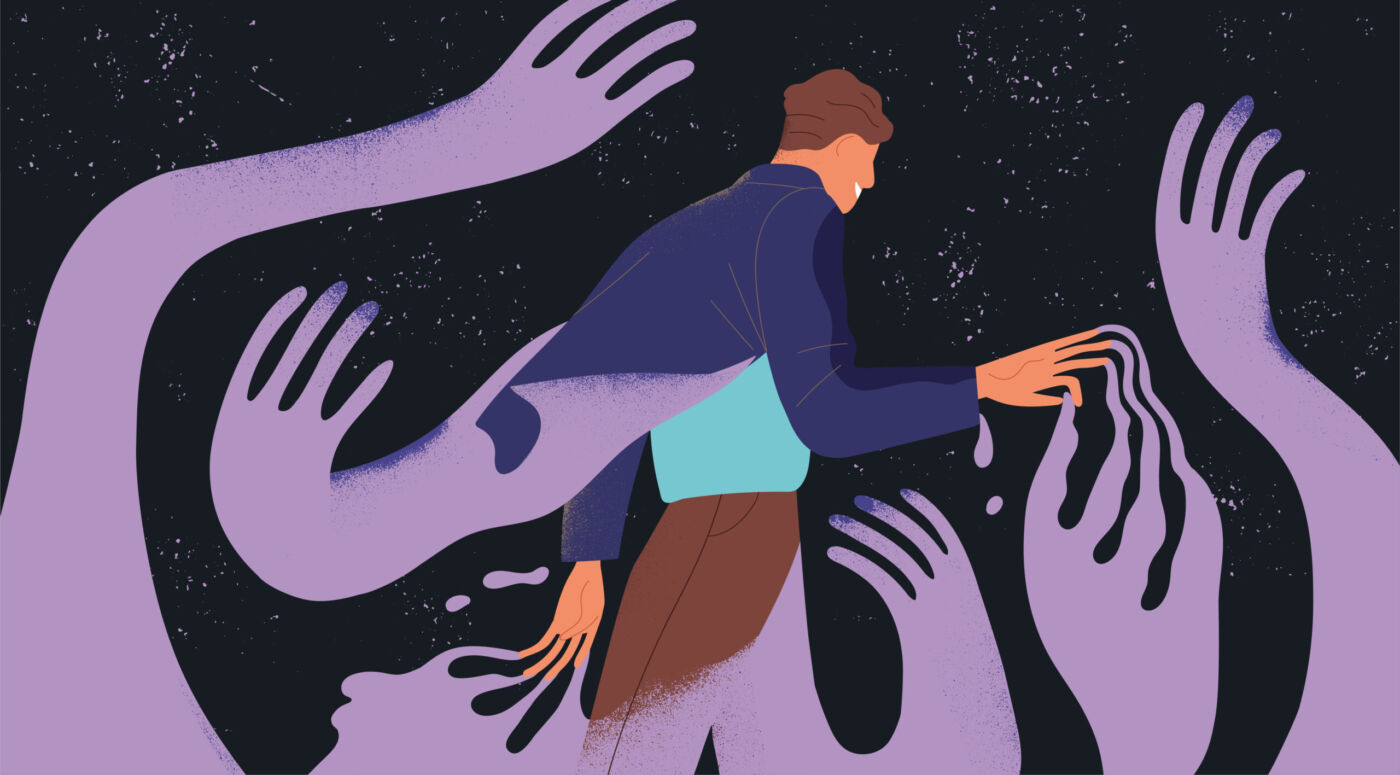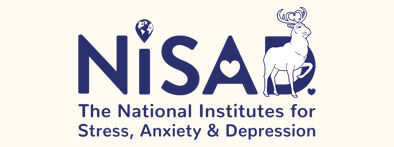In these uncertain times many of our fears and anxieties may be exacerbated.
This can happen anywhere and anytime but particularly in the quiet hours of night. Perhaps you can relate to the following experience that was shared with us?
‘As I woke from a difficult night of half-sleep, the overwhelming realisation was that I have been living with, and devising coping mechanisms to deal with, my fears all my teenage and adult life.
Sometimes it crashes over you with the full force of that one big wave, whilst on a summer beach, but then dissipates and retreats as if it never existed.’
When confronted with a wave of fear, it can be a natural tendency to try and get rid of the feeling; to push it away as quickly and forcefully as possible. Yet, unfortunately, most of the time, trying to get rid of the feeling only serves to hold it longer in place, making the wave feel even more powerful.
When we’re experiencing a really powerful emotion like this it often comes along with strong body sensations and compelling thoughts, which can make the experience feel overwhelming.
So what can we do if we feel overwhelmed by a wave of fear or anxiety?
The practice of mindfulness (read more about mindfulness here) not only enables us to notice what we’re feeling, it also increases our ability to cope with our emotions. Now, if that sounds like a broad solution for an acute problem, then here is a specific technique that can help:
The AWARE technique
In the thick of the emotion, as best we can, we can take ourselves through these steps and understandings:
Accept
It’s OK not to like the feeling but by acknowledging and accepting how we’re feeling – rather than fighting against it – we begin to turn off the body’s stress response.
Watch
With practice, we can learn to step back and observe the fear or anxiety. We can rate it on a scale of 0 to 10. Like a wave, the intensity of the feeling will go up, but it will go down again. As we watch the feeling, letting go of any judgements about it being good or bad, we can begin to recognise that it’s just our body’s response to a perceived threat. The body is unable to sustain an acute stress response, and it will begin to dissipate, like riding the crest of the wave and coming down the other side.
Act normally
It’s important to demonstrate to our brain that everything is OK.
We can practise letting go of any tension in the face and body by consciously relaxing our muscles and breathing in through our nose, deep down into our stomach, then exhaling more slowly.
Is there a particular breathing technique can I use?
Here’s a guide to box breathing.
If appropriate, it’s beneficial to continue doing whatever we’re doing – because fleeing from the situation can make it worse – and just focus on each action or moment one by one.
Repeat
We can give the process time and keep repeating steps A, W, A for as long as we need: Accept the feeling, Watch it and Act normally. Not only does this repetition benefit us in the moment, but the more we practise, the more we learn and increase our skills.
Expect the best
Our brains tell us stories – some may have terrible endings – but they’re just stories. We can recognise this and begin to create our own narratives.
Owing to our evolutionary origins, anxiety and fear are common reactions to the unknown. If you feel anxiety or fear rising, you may find this technique will help you to ride the wave rather than be overwhelmed by it.
Yet, you may ask, are there ways of managing our fears and anxieties in the long-term rather than just in the moment? Can we overcome our evolutionary programming?
In recognising our fears, and how they affect us, many of us might question the nature and purpose of fear. Maybe you can relate to this experience of fear as a driving force?
‘Fear is a feature that pervades human existence. It is a thing that drives and motivates us, as a species, to achieve many things and to strive for success in love, career and fortune. After all, would we bother with any of this striving stuff if not for fear?
When have we ever existed without fear? Can we achieve an existence without fear?’
‘Away from’ versus ‘towards’ motivation
There is no denying that fear is a powerful motivator!
No doubt, we can all think of instances where the fear of something happening has made us launch into action like a rocket. Yet, fear is not the only means of motivation, and, if experienced on a daily or regular basis, it may actually impair our effectiveness or sense of wellbeing.
As a motivator, fear can be described as ‘away from’ motivation – meaning that what drives us is the thought (and often image) of what we’re trying to avoid. We’re all different, and although many people have built their success on fear, this kind of motivation can also limit our effectiveness; in two ways.
On the one hand, we can become so anxious or scared that we tip over from the ‘sweet spot’ of feeling alert and engaged into the fuzzy-headedness of panic.
On the other hand, we can become so focussed on what we don’t want, that we subconsciously move towards the thing we’re trying to get away from because our attention is focussed in that direction.

With regards to our wellbeing, it perhaps goes without saying that fear is rarely a comfortable experience. Moreover, although our bodies are designed to use fear to respond to potential threats, we also need time to rest and recover. A constant drip-feed of fear doesn’t enable this recuperation.
So, if we want to experience drive in pursuit of a goal, what’s the alternative to fear?
As with yin and yang, and the balance of the universe, ‘away from’ motivation has its opposing yet complementary pair: ‘towards’ motivation. This is where we focus on what it is that we actually want; where we encourage ourselves with the positive image of the potential reward. Not only does this typically feel more comfortable, but it also aligns our conscious-thinking with our subconscious focus of attention i.e. both our conscious mind and subconscious mind are facing in the same direction: towards what we want, and can work together more effectively.
There are, of course, times when fear may be more appropriate as a motivator, and we can limit it to that specific goal or objective. As we bring our awareness to these internal processes, it gives us more choice over what kind of motivation would most benefit us or the situation.
If we’ve spent most of our lives motivating ourselves through fear, it can feel challenging or even unsettling when we begin to switch our means of motivation from away from to towards.
As always, the first step is through awareness of what we’re feeling and thinking. Then, our most powerful tool is being compassionate towards ourselves. Change rarely happens in a straight line; there will be ups and downs as we explore and practise a new approach.
As best we can, maintaining a kind and compassionate manner towards ourselves can really help us to navigate changes in the way we motivate ourselves.
The brain’s negativity bias
It may be useful to know that fear or anxiety as a reaction or driving force is actually extremely common and it’s due to how the brain evolved.
Things we perceived as threatening, dangerous or potentially harmful needed to be remembered as a function of survival.
We developed far larger areas of the brain responsible for processing and storing information we deemed as threatening, than of knowledge of what made us happy or relaxed, for example. This is our brain’s ‘negativity bias’.
When we encounter a threat, we engage the fight-flight-freeze stress response in the body. This releases stress hormones into the bloodstream so we can fight, run away, hide, or take any action we think will diminish the threat.

As we evolved, these threats would perhaps have been lions and bears or losing contact with our clan. In our modern lives the threats that engage the stress response are more likely to be worries about finances, our health or concerns about a loved one.
In reality, these threats are often only played out in our imagination and don’t actually happen. The body, however, doesn’t differentiate between a real threat (a hungry bear eyeing us up for dinner!) and an imagined threat (worrying about something that might happen) – both switch on the stress response.
A real threat often needs a quick reaction, whereas an imagined threat can hang around as a looming event in our mind for a long time, making us feel persistently anxious and fearful.
Longterm, this can be seriously damaging to our health.
So what can we do?
Becoming mindful is really useful: not only does it help us to practise recognising when we’re caught up in the imaginings of our fear and anxiety (and thereby switching on the stress response) but also this awareness gives us the choice to do something about how we are reacting to the situation.
Perhaps practising the AWARE technique or mindfully watching our thoughts with some objectivity and distance can help to stop us feeling completely overwhelmed.
Practising mindfulness can help us to become more aware of the pleasant things that happen too. Good experiences need more conscious awareness in order to be moved into our long-term memory.
When life is really challenging (as we all find at times), being able to notice the small things that lift us up – like somebody making us laugh, kind words, a beautiful sky or birdsong – helps prevent our brain defaulting to the more easily-stored ‘bad stuff’.
Intentionally bringing our awareness to the ‘good stuff’ is a really useful tool in overcoming the natural negativity bias and feeling our life is just full of difficulty.
Mindfulness and self-compassion are fundamentally linked. Many different cultures assert that focussing on ourselves is selfish or self-indulgent, and there can be a big resistance to exploring self-compassion.
But self-compassion isn’t about self-indulgence.
The evidence actually shows that practising self-compassion may be an effective antidote to narcissistic behaviour.
For most of us, practising self-compassion requires practice but the benefits are worth it.
Current research shows that we increase levels of oxytocin, the ‘love hormone’, when we are self-compassionate.
This increases feelings of:
- trust
- calm
- safety
- generosity
- happiness
Imagine the difference this could make to ourselves and our relationships, our interactions and how we might engage in the world around us?
More than this, oxytocin can reduce the fear and anxiety associated with the fight-flight-freeze stress response by moving us out of this body state and into the calmer ‘tend and befriend’ or ‘rest and digest’ body state.
Self-compassion can really be seen as essential self-care.

Alison Easton
BA(Hons) HPD DipCHyp
Director of Clinical and Creative Development
For nearly 10 years, I have been providing therapy using hypnosis to assist people in changing the beliefs and habits that are making them unwell or unhappy into those that foster health and happiness.
My role at NISAD draws on this experience to write informative and compassionate content to support all that visit us on social media and on our ELK.Health programmes.

Karen Asprey
BSc (Hons) DipCHyp HPD RCMT
Clinical Director
I’m a clinical mindfulness teacher and mindfulness-based therapist and qualified to use clinical hypnosis.
I first started meditating when studying Acceptance and Commitment Therapy, a mindfulness-based therapeutic approach, about twelve years ago. The impact mindfulness meditation had on my life has shaped my career.


